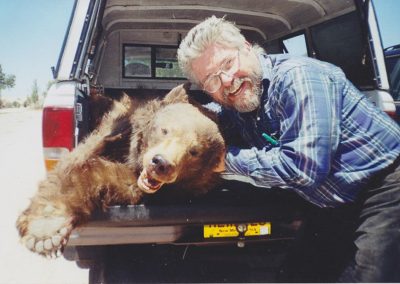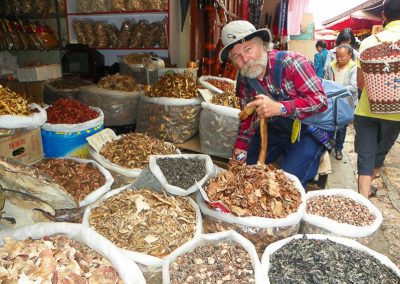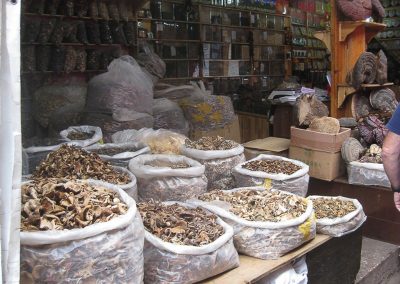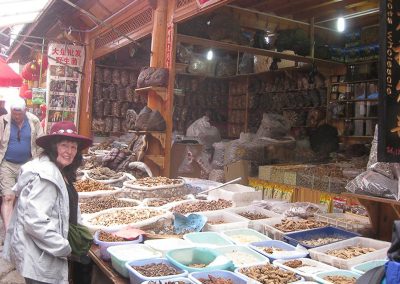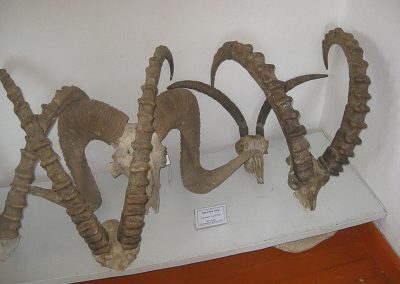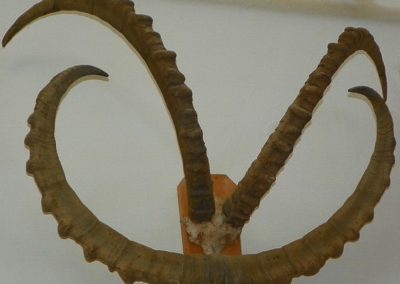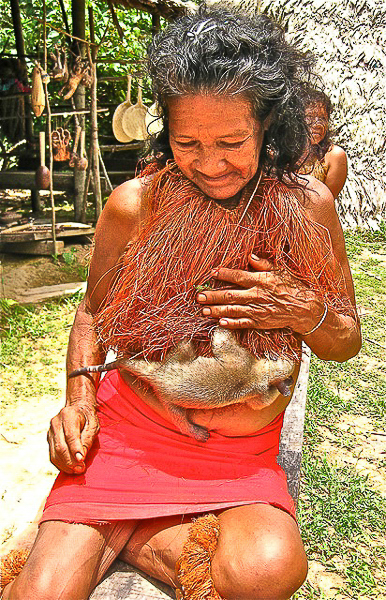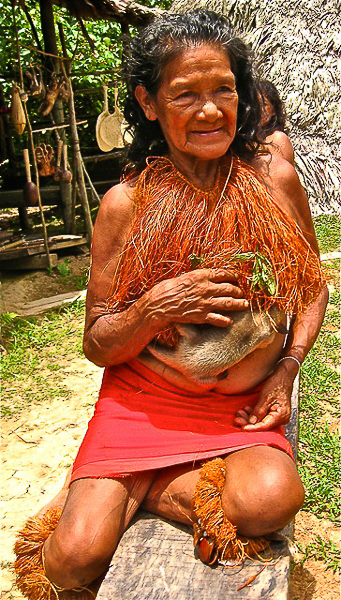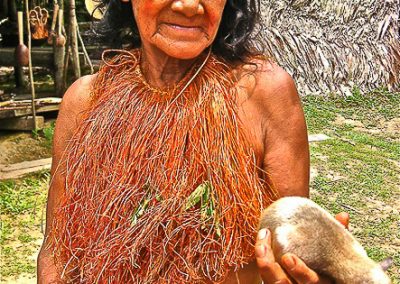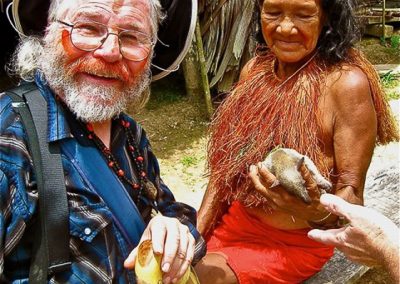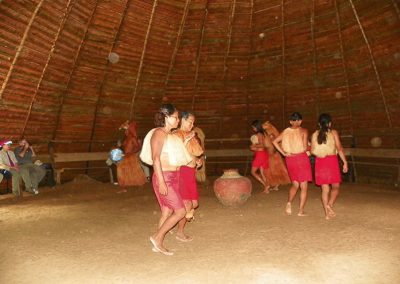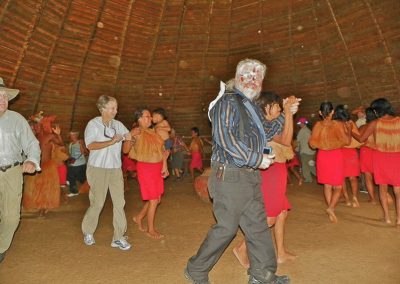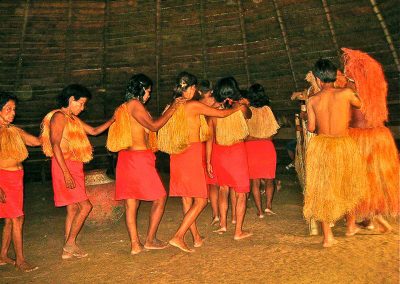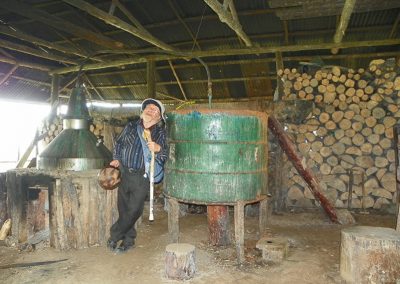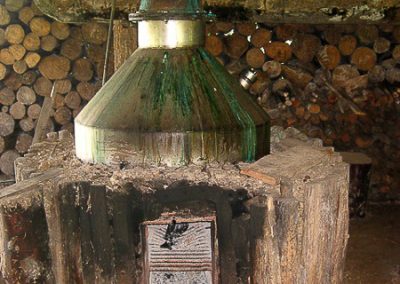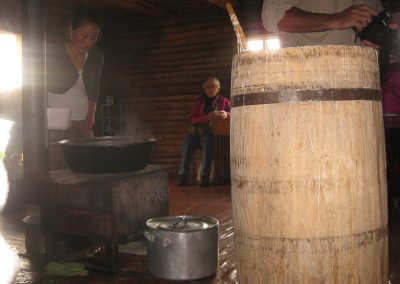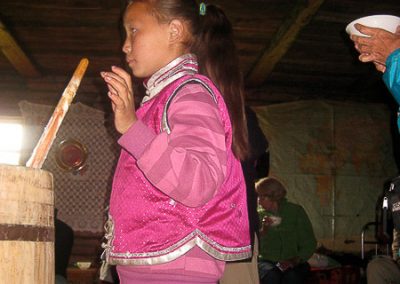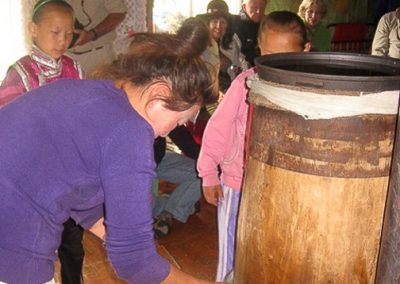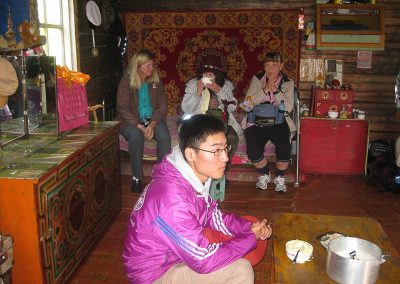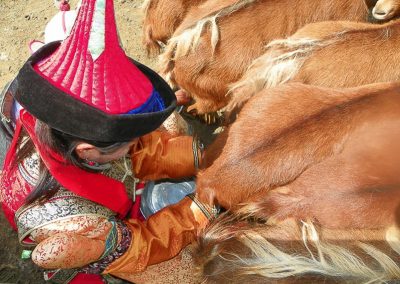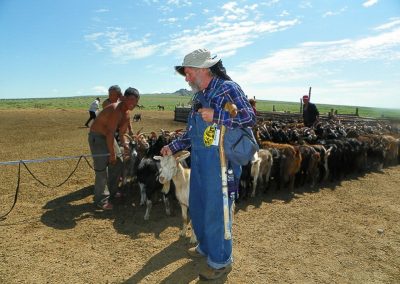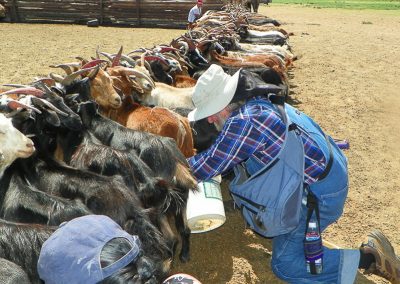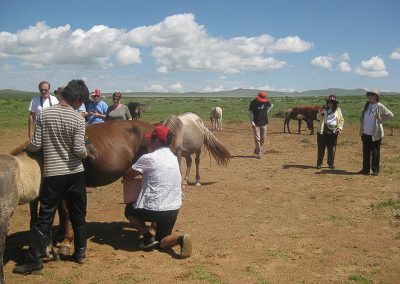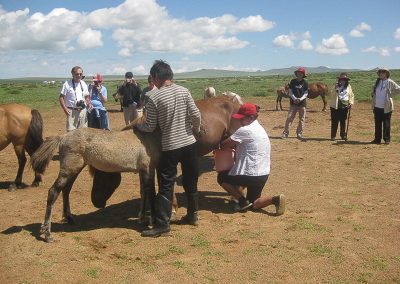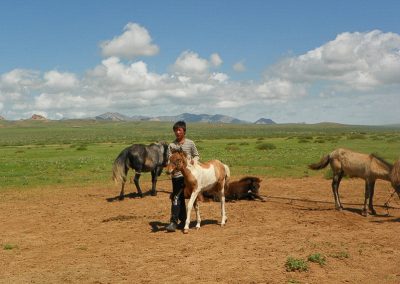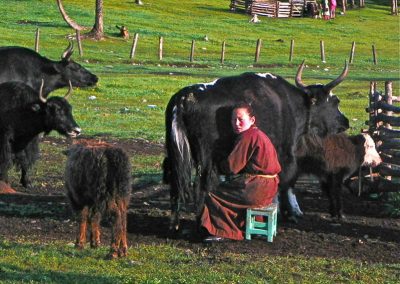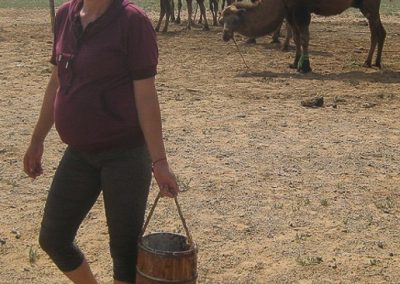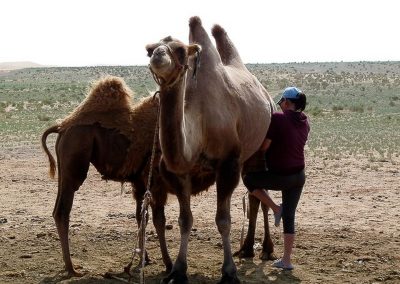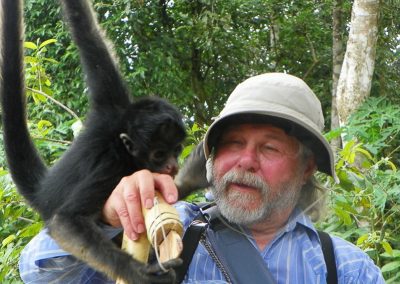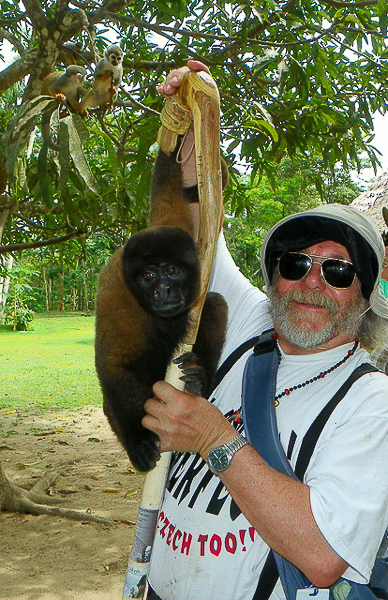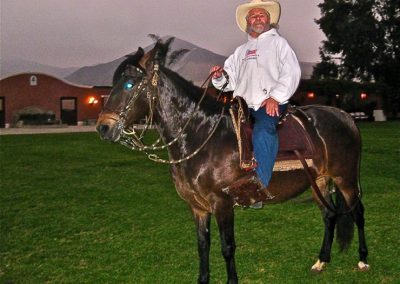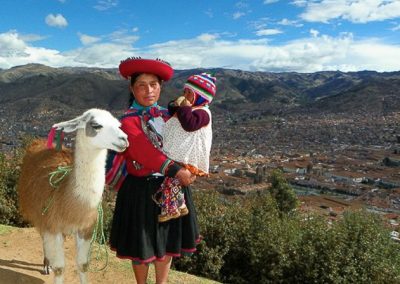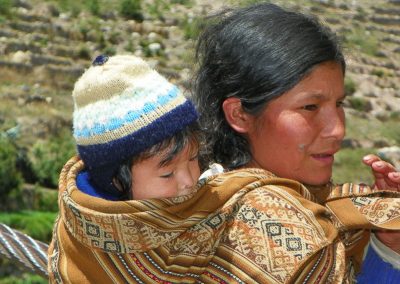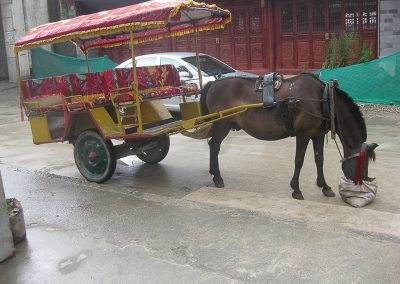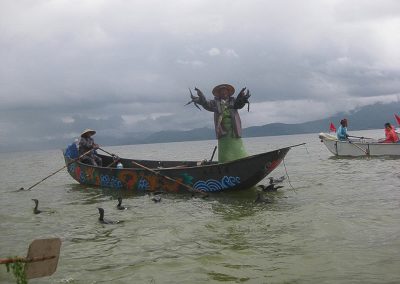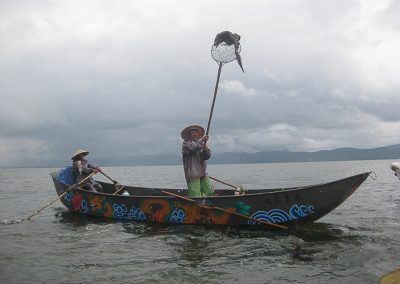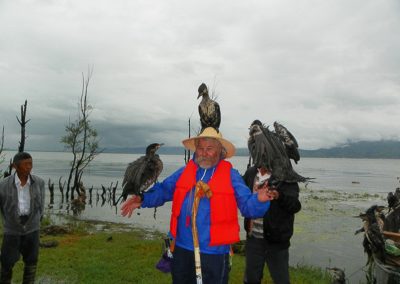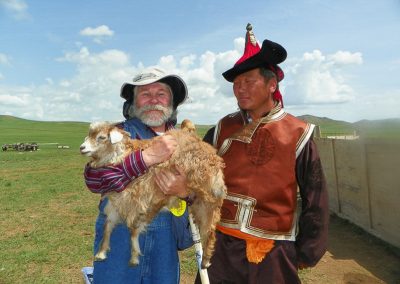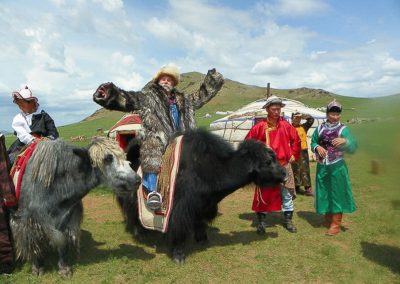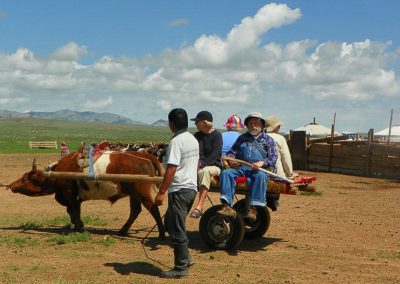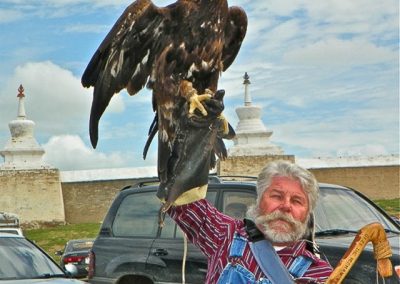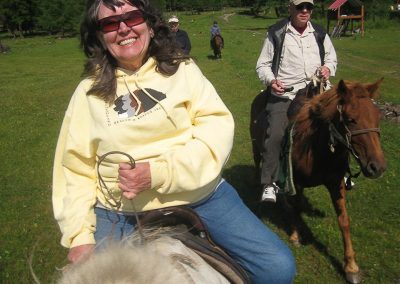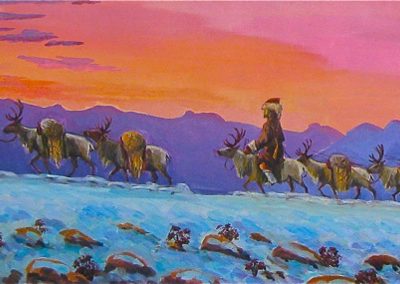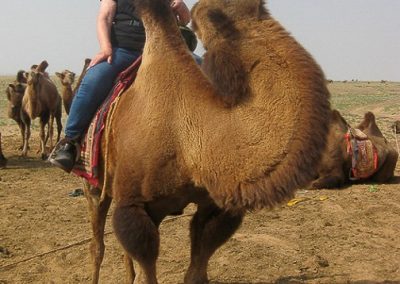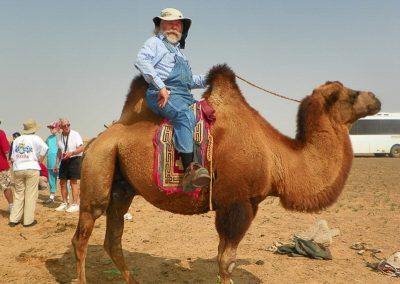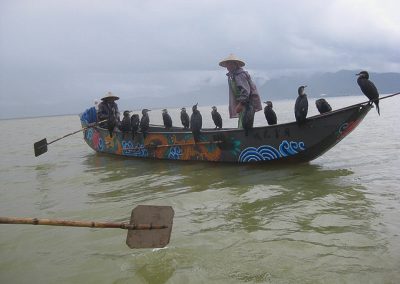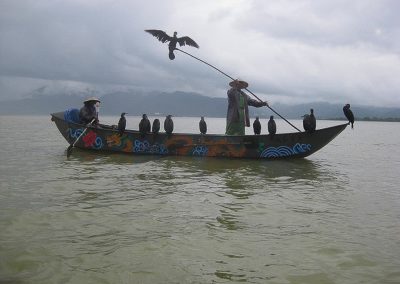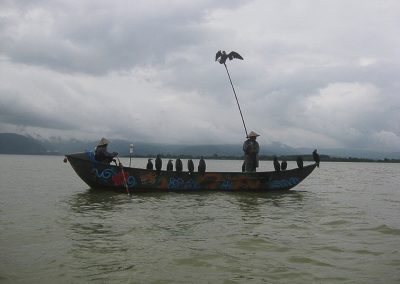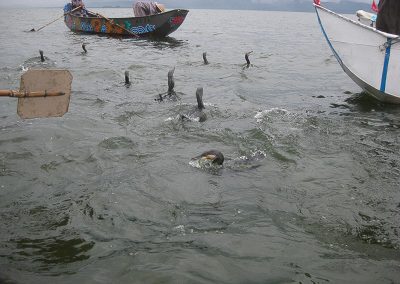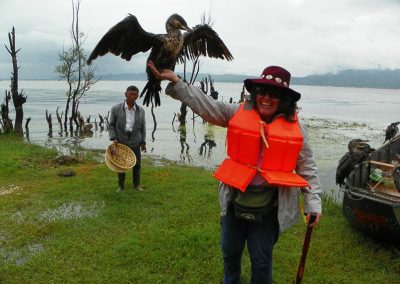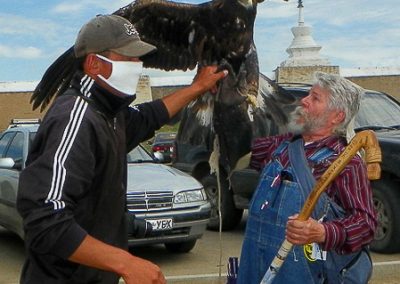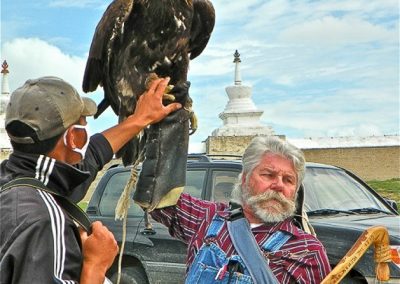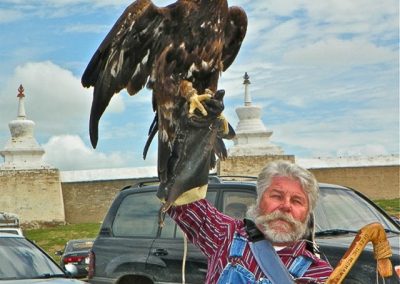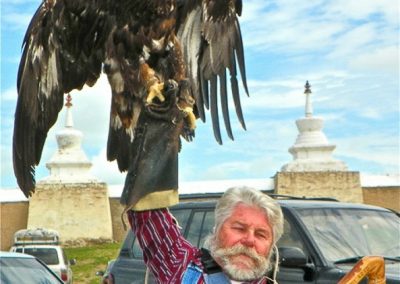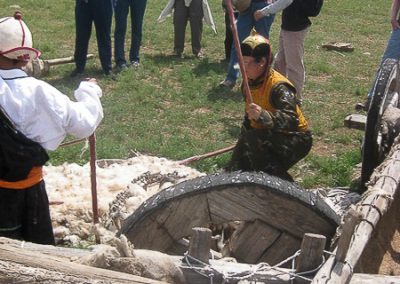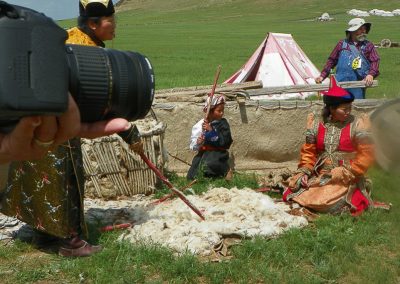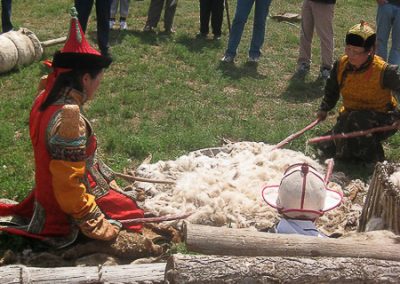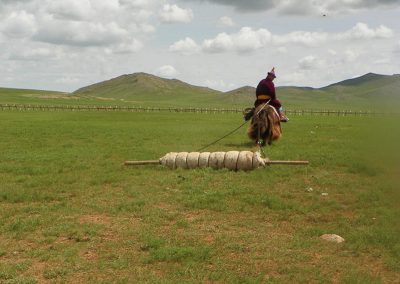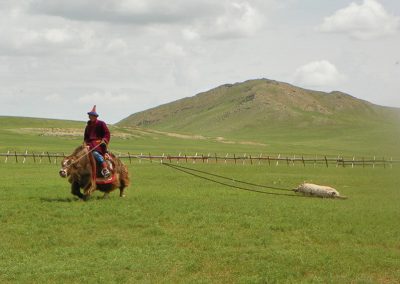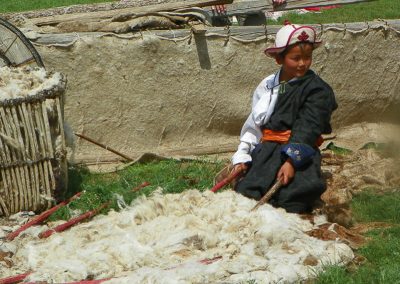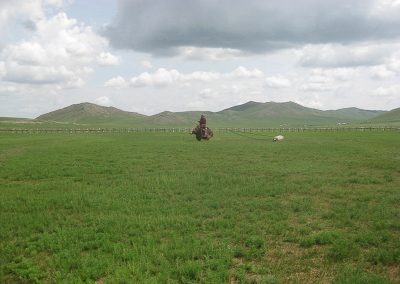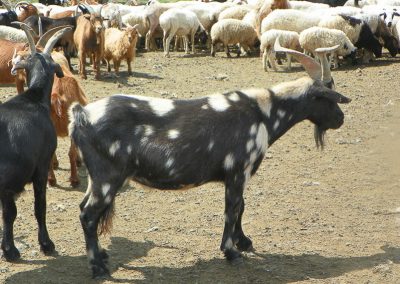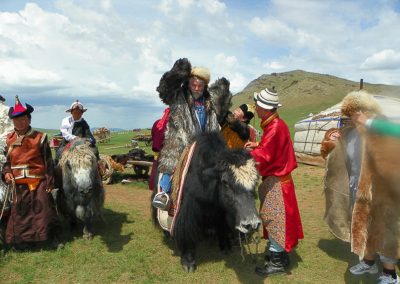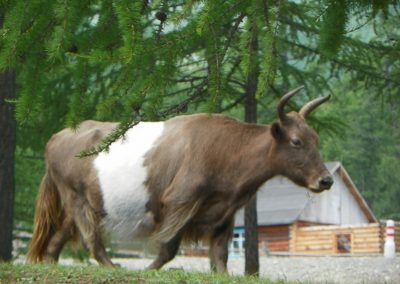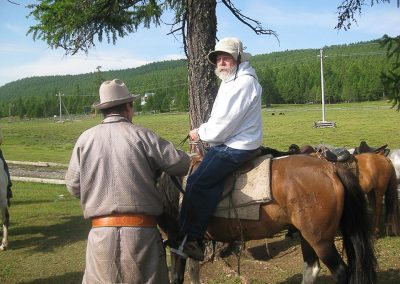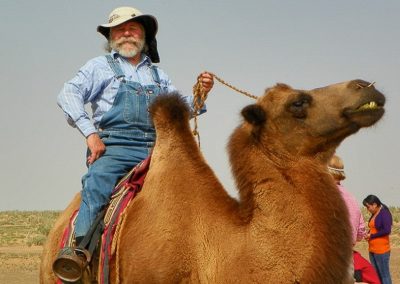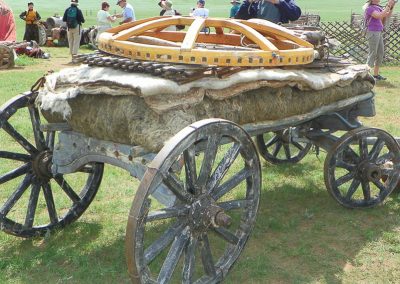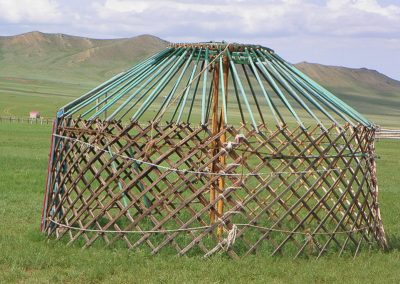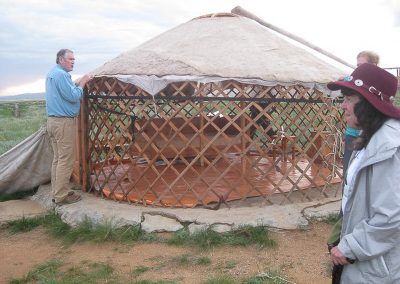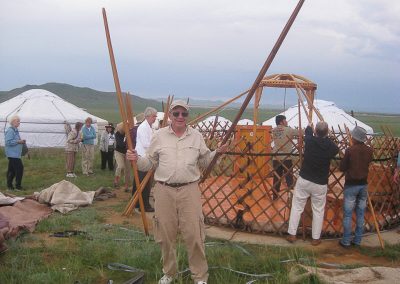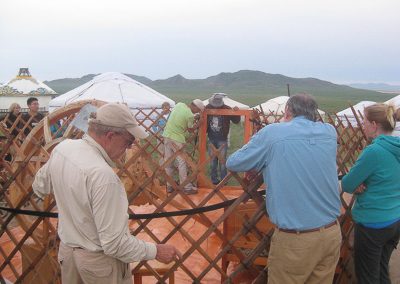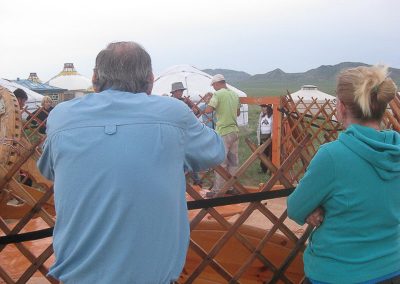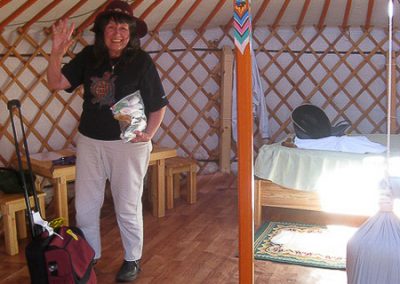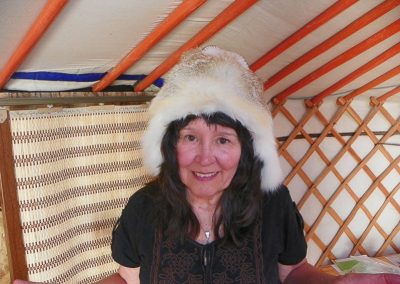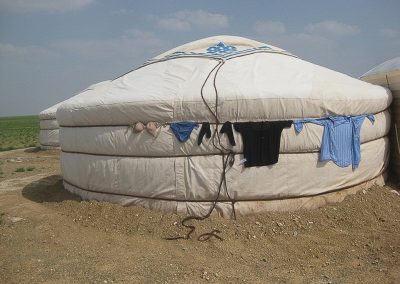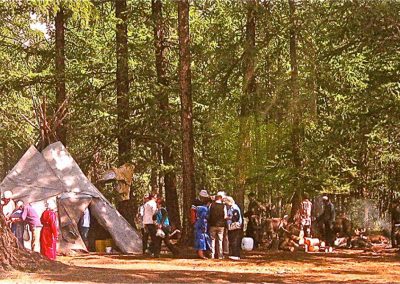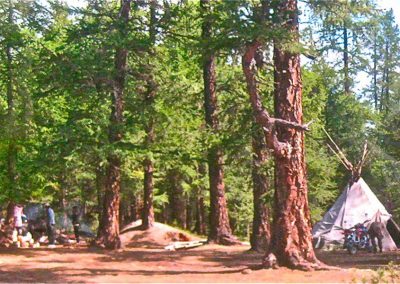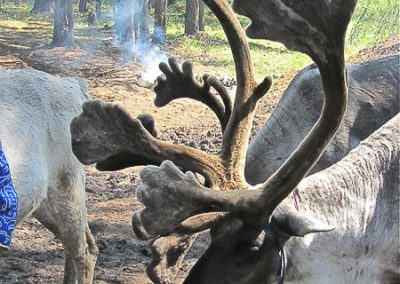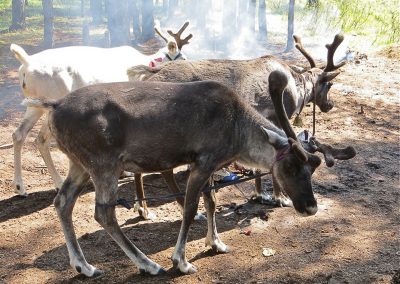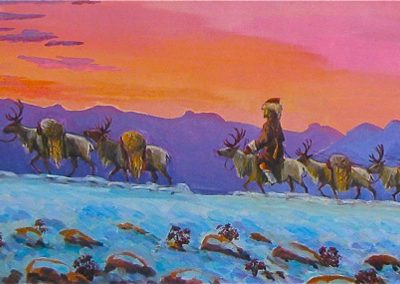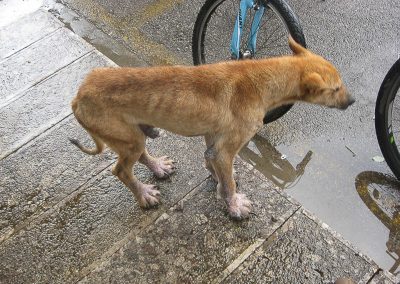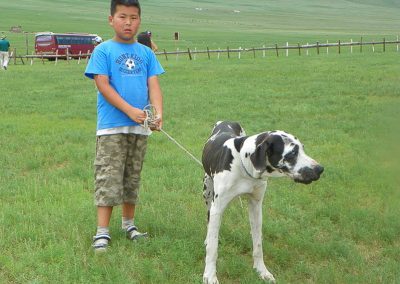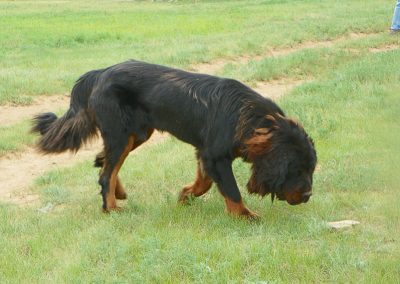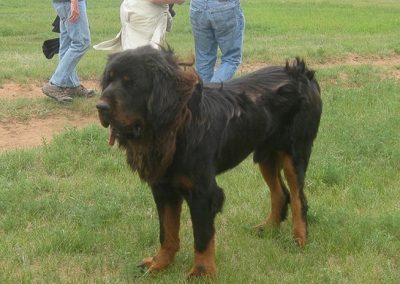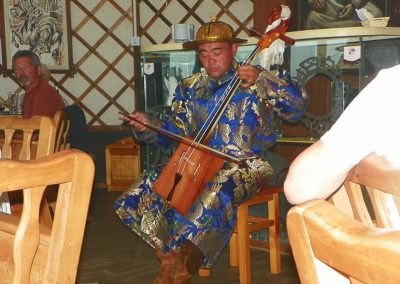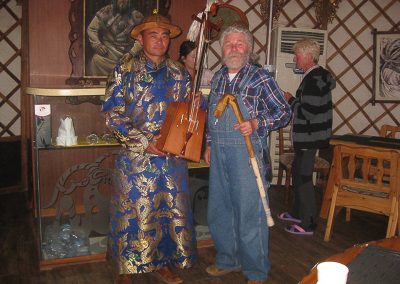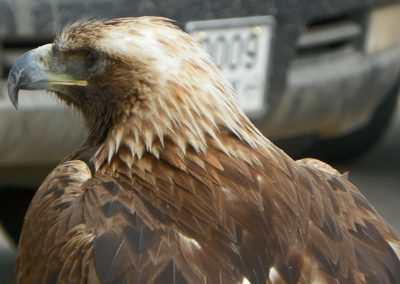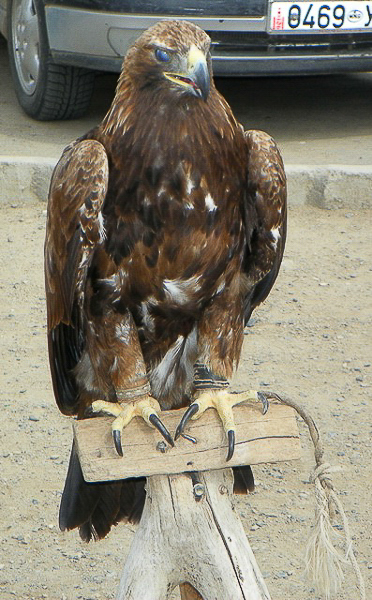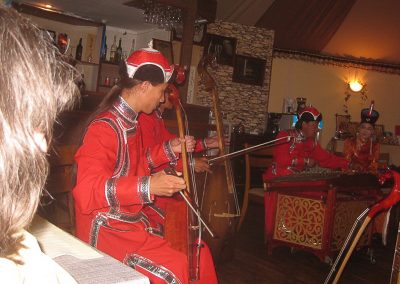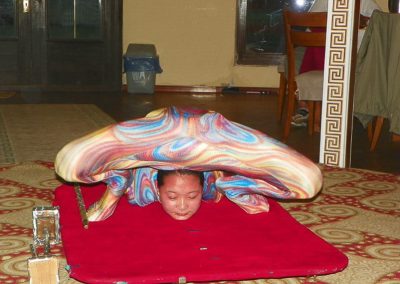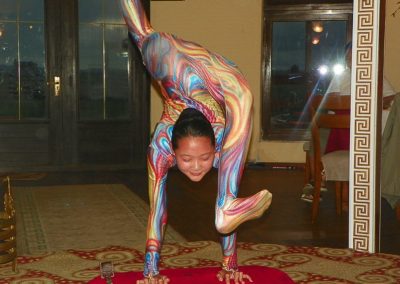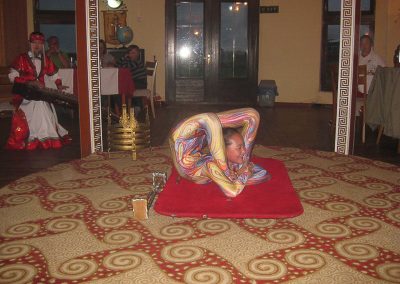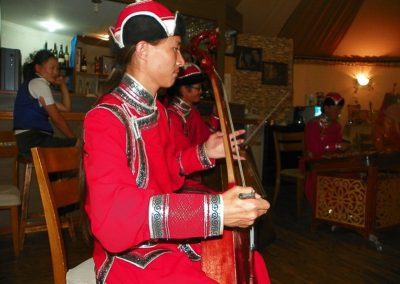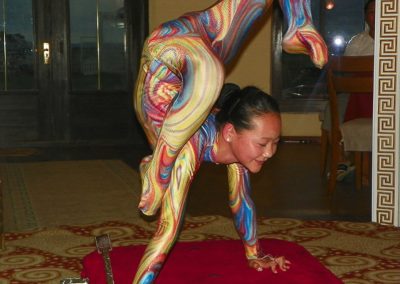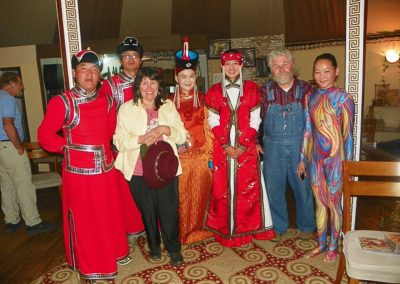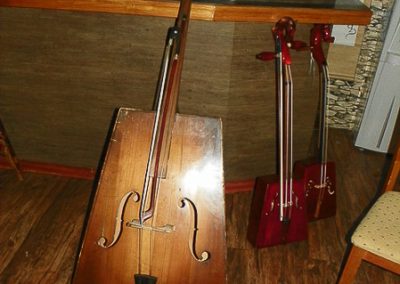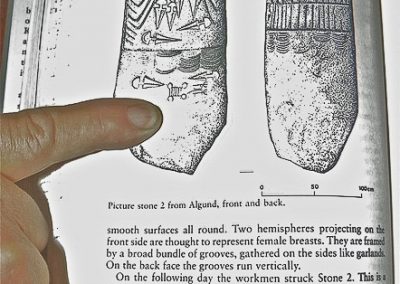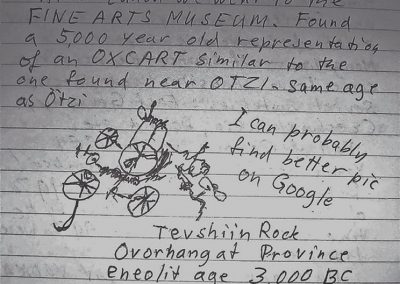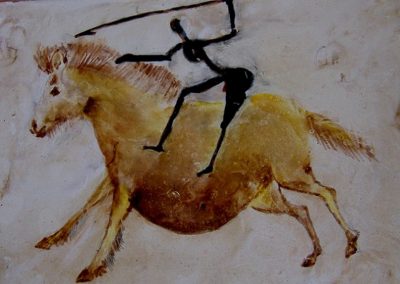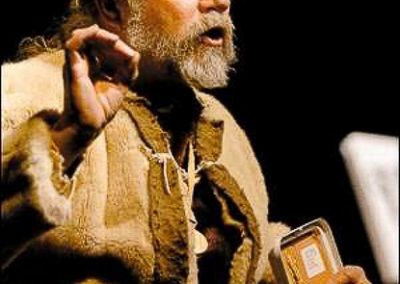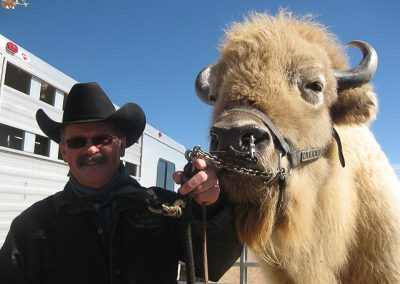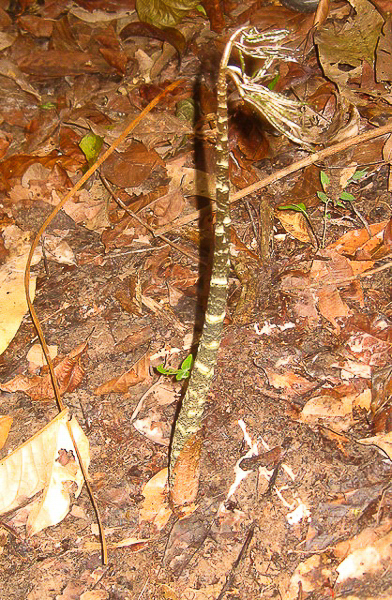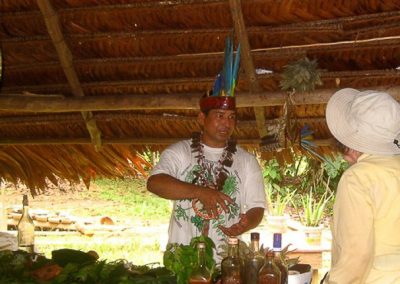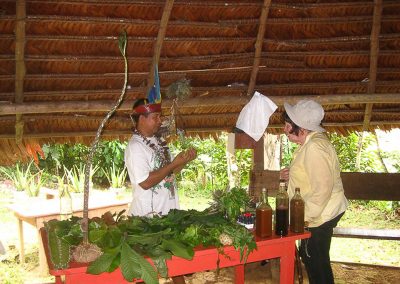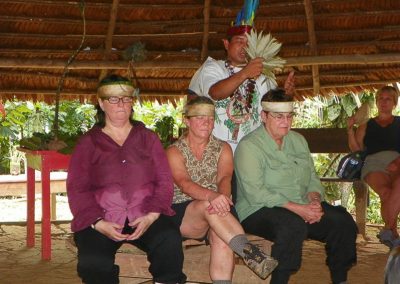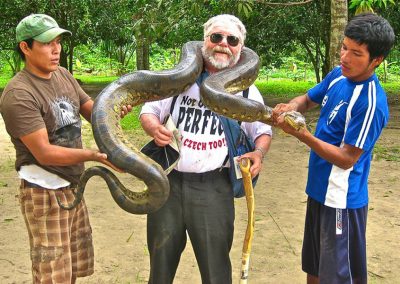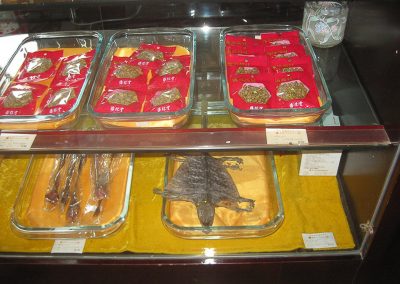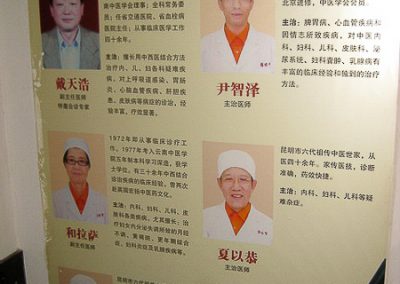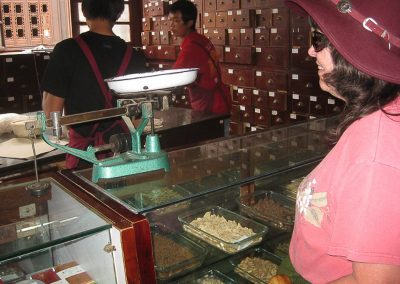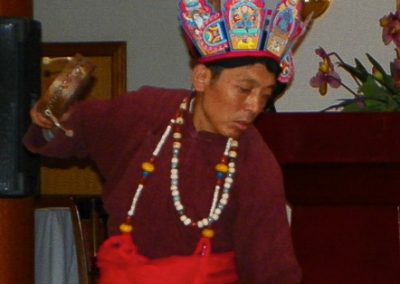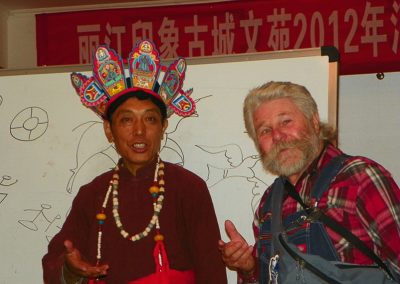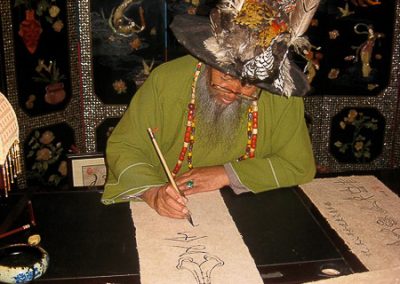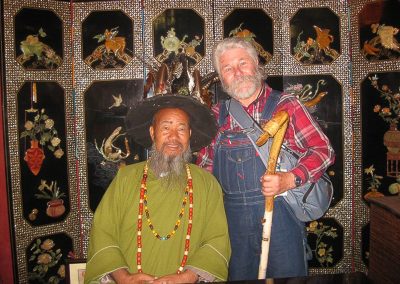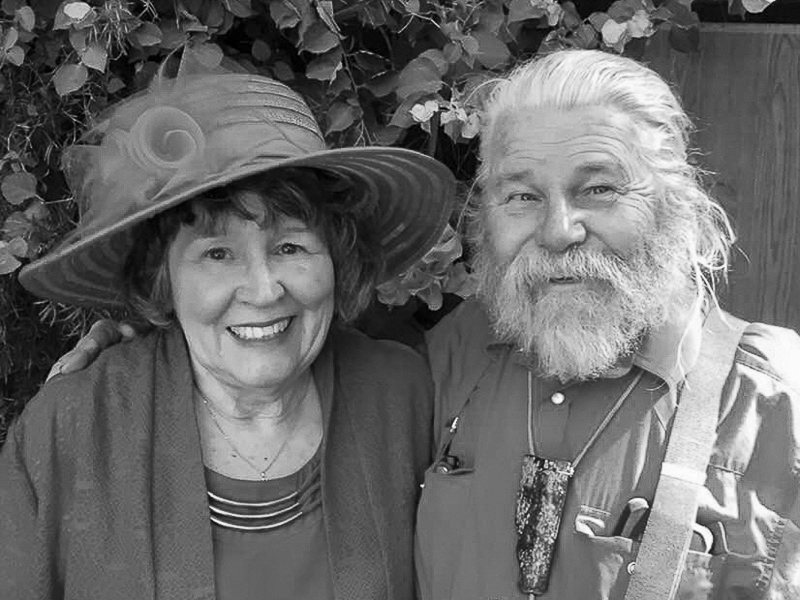
Pastoral features of the culture of Slavic Veneti
By Petr Jandáček
Insights into the pastoral features of the Culture of Slavic VENETI through the experiences and observations of MONGOLIA in 2012 Augmented by Pictorial Appendices attached at the end of text:
Appendix 1 – Merchandise of Hunters & Gatherers
Appendix 2 – Symbiotic Foundations of the Dairy Industry
Appendix 3 – Microbe Cultures for Milk Products & Alcohol
Appendix 4 – Milking Goats, Sheep, Yaks & other Bovines, Camels, Horses & Reindeer
Appendix 5 – Riding on backs of Animals
Appendix 6 – Falconry in Antiquity and Today. Use of Hunting & Fishing Birds
Appendix 7 – FELT Making
Appendix 8 – On The Hoof = Shelter, Clothing, Meat & Milk and everything else….
Appendix 9 – Construction of a GER (Yurt)
Appendix 10 – Reindeer Herders – A People Apart
Appendix 11 – Leisure Time for Mongols – Play & Fun & Games
Appendix 12 – Oxcarts Across Eurasia
Appendix 13 – Shamanism
Appendix 14 – Synopsis
Foreword
It would be disingenuous to present this as a scientific study. Rather, it is a travelogue which I believe is insightful, and potentially of value to the many researchers and authors in the Slavic-Venetological community as it had been to me. My travels in Mongolia 2012 (and last year 2011 in tropical South America) had provided me with an understanding of Neolithic Economy which I could never have had gained from literature. To be sure, the biota and climate of Central Europe had always promoted a more diversified economy than the environment allowed in Mongolia. Still, the aspects of transhumance (en.wikipedia.org/wiki/Transhumance) are largely applicable. As tourism is gaining hold on Mongolia, more and more vacationers are enjoying the experience. Arguably, my journey was unique in that I deliberately tried to link my experiences to the study of the Veneti.
Abstract
I had learnt many things about the ancient Slavic VENETI by extrapolating from contemporary isolated ethologies of Mongolia and China and applying such findings to more profound understanding of archeology of Central Europe. For instance: Hunting and Gathering may be considered a primitive way of life. Yet, “gathered” resources such as mushrooms of the forest, local varieties of insects or amber found by beach combers on the shores of the Baltic Sea are likely to spawn mega-commerce both in ancient times and contemporary markets. Horn of the ibex had great commercial value in the distant past as it still has now. I have learned to appreciate the fact that milk and milk products played an extremely major role in economies of the past and that few mammals (if any) were exempt from the dairy industry. I had learned that the dairy industry is “symbiotic” and not merely “exploitive” by humans. I have come to understand that yeasts and bacteria were routinely used by ancient peoples to convert carbohydrates, lipids, and amino acids into alcohol and/or more durable food products for later consumption and/or for the market place. I have come to appreciate that riding of angulates is a very ancient “cavalier” way of life and is likely to be millions of years (in the making) rather than just a few thousand years old. I have learned that Shamanism is alive and well in China and Mongolia and that in the modern world Shamans are invited to the United Nations and other international gatherings and treated with much respect. I have experienced the taste of insects (en.wikipedia.org/wiki/Entomophagy) and found them to be very palatable and an important part of local and distal economies as trade goods. Mongolia has a population about the same as that of Slovenia but the population density precludes a critical mass to create reasonable infrastructure of roads, railroads, plumbing and airports etc and subsequently Mongolia is a land of “great future potential… and… always will be. Mongolia has a very small human population but it has 43 million head of livestock! I had spent three weeks in Mongolia and did NOT see a single chicken! In China I have seen ducks and geese, chickens, doves and parakeets and every other bird and fowl and insect sold for the dinner table and as pets. Alas, in Mongolia the ONLY “domesticated” birds which I had seen were eagles and hawks used in falconry! If my travelogue is published in the Venetological Zbornik it will have black and white photos. I can provide color photos to readers upon request. Perhaps Mongolia is one of the last places on Earth to preserve the Abrahamic way of life, and within a short time such may not be found anywhere on this planet. If we fail to record it as I have tried in this travelogue, we are likely to have no reliable ethnographic evidence for our study of the European VENETI.
Geo-political facts about Mongolia
Mongolia is as large as “Western” Europe. It appears small as it is “sandwiched” between Russia and China. For centuries it was a “protectorate” of China and Russia (Mongolia’s ONLY neighbors). Russia and China may have disagreed on many details of how to deal with this “protectorate”, but they agreed that the land must be protected from the influences of Britain, France, United States, Japan, Korea and other “corrupting” interests of the other parts of the world. Additionally, both China and Russia have had xenophobic periods of national histories when they themselves had closed their borders and minds to foreign influences. Only since the decline of communism(s) had mining companies offered some small change to parts of Mongolia. Copper, gold, and rare earths are the ores which are mined in this land. Typically a Mongol pastoral family members can fit all of their metal objects into a metal bucket used for milking of camels, horses, sheep, goats, reindeer, yaks and other livestock. (Some few pastoral Mongols have also acquired metal stoves, motorcycles and solar panels.) Thus, even in the 21st Century the pastoral nomadic Mongols have very limited experience with metallic objects.
The Mongol diet
The Mongol diet consists almost entirely of fermented milk, yogurt, and nondescript bone-hard / sun-dried yogurts and “cheeses”. They never wash their fermenting containers/vessels for fear that such sanitary steps might disrupt the biota which turns their liquid milk into more durable sol-gel or extremely hard dairy products – which I affectionately call “extra-somatic kidney stones”. The microbes which turn butters rancid must also remain predictable and uncontaminated. Any disruption of the fermenting biota in their containers may change the Ph of the environment and may cause harmful bacterial cultures to take over their dairy economy. In 2011 (on our trip to the Amazon jungle) we were offered alcohol which the women ferment after CHEWING and SPITTING plants into a communal spittoon. I declined to drink the Amazonian Spit Beer. I DID drink some of the Mongolian fermented mare’s milk liquor. Mongols have primitive stills which they use to distill alcohol from fermented mare’s milk (lactose rather than fructose or maltose). It tastes like yogurt with very bad wine added. Cognac — it is NOT! I had observed a “bait and switch” strategy in milking of mares. A twelve year old boy brings a three month old foal to the mare and to his mother who does the milking. Sometimes the boy steals a ride on the immature foal. Riding on a three month old foal is STRICTLY FORBIDDEN by equestrians in America. To his credit – the boy put his weight on the foal’s pelvis and not on the animal’s immature spine. The foal is allowed to nurse on the mare for about three seconds, and then is pulled away from the mare. The boy’s mother then continues to milk the mare. It is a custom to offer fresh or fermented mare’s milk to visitors – (as bread and salt was offered by Slavic peoples). Milking of camels is a “bait & share” rather than “bait & switch”. The baby camel is allowed to continue to nurse on one teat while the woman obtains milk from the other. Tea with salted mare’s milk and floating melted yak butter is offered to visitors after they sit down in the Mongolian “ger” (Russian yurt). See photos.
About Milk & Meat in Mongolia
My grandmother in Czechoslovakia had one or two goats, and in my naiveté, I expected a small number of dairy animals supplementing a diversified economy. Instead, I found an exclusive milk and meat economy based on hundreds (or thousands) of animals tended by a half dozen to a dozen of family members. The women spend five hours a day milking during milking season. These family groups move their livestock several times a year to greener pastures as the grasses become locally exhausted. There are (almost) NO fences in Mongolia. The Mongol diet of dairy products is supplemented by meat. Lambs, veal calves, kid goats, reindeer fauns or other young are not eaten. The Mongols harvest ALL the wool, hair, muscle power, and milk from EACH animal before it is considered too Geriatric to make it through the horrible Mongolian winter, and only THEN it is slaughtered for meat. Only tough flesh from OLD animals – who had given every last ounce of fiber, milk and locomotion power is harvested to supplement the milk products. Tooth-pics are used without hesitation in every fine restaurant in Mongolia to remove sinews from the teeth of human gourmets. Picking of teeth is almost a communal ritual. Mutton is the most common meat dish in Mongolia. The Ancient Hebrews (before the Laws of Moses) had the so-called Laws of Noah – which did not address the relation of Man to God or Man to Man so much as the relationship of Man towards Animals. One such law was that the animal had to be killed before parts could be eaten. The fact is: that the best way to preserve meat – is – to keep it alive. This begs the unsavory question – Is it OK to harvest a leg from an animal in January, and another leg in March without killing the animal? I did enquire and learned that indeed, in Mongolia you have to KILL the animal before roasting any part. That does (usually) include castrated testicles.
Hominids had been riding on the backs of animals for two million years
The common wisdom is that riding on horseback or other animals is a recent event/invention – perhaps less than 10,000 old. As I mentioned before: I had observed a pre-teen in Mongolia ride a foal which did not weigh any more than my 170 Lbs. This made me ponder the fact that when I was in the Amazon jungle at a Monkey Island Preserve (2011) I had monkeys climb and ride all over me. I like to say in jest – that there was one monkey that pestered me so much I thought that I should at least buy her a drink. The facts are that #1. human babies are carried by their mothers for more than one year after birth! #2. Surely, Australopithecus in Africa observed leopards “ride” on zebras as the feline bites the jugular. #3. There is a saying in America : ” Monkey sees – monkey does”. #4. Surely after observing leopards – an Australopithecus of two million years ago also would spring to an angulate’s back and sever the blood supply to the hoofed animal’s brain with a stone blade. Thus, the rides may have been short….. but much, much older than a few thousand years! #5. Cradleboards are common for “papooses” in every human society. #6. In Mongolia I had ridden on a yak, on a Bactrian camel, and on a horse. I had also observed reindeer riding. #7. I have come to the conviction that RIDING is at least two million years old!
Felt Making
Felt making is something which I had observed and photographed in Mongolia. I did not observe any weaving of cloth there, nor had I observed any basketry. Felt making is an analog technology and weaving is binary and digital (which is now applicable in computer science). I perceive that weaving requires a more advanced technological equipment and acumen than does felting. Weaving also requires more advanced mathematical tradition than felting. Big rolls of felt are pulled by draught animals to bind the fibers of the material. In the past I had suggested that the reason that Slavs RHYME their numerals(enA dvA, TRI čTiRI, pJET šJEsT, sed*M os*M, DEvET DEsET) is because it was useful in weaving and basketry.
The felt is largely used in the construction and insulation of the gers (yurts). I provide many photos of GER construction and GER temporary settlements. Since the GERS very much resemble the Geodesic Dome in which we live in Los Alamos, I am contemplating plans for permanent housing in Mongolia based on a hybrid design of “GERodisic” construction insulated for temperatures of -50 F. Categorically, traditional Mongolian architecture is ROUND – in form of felt yurts or Teepees like those of the American Indians of the plains. Like in the popular movie: Dances with Wolves (en.wikipedia.org/wiki/Dances_with_Wolves) See photos.
What other things can we learn from the MONGOLS
I learned an interesting philosophy in Mongolia: “There is NO BAD weather! Only BAD clothing!” See the photo of the clothing of yak riders in the winter.
We saw only LARGE DOGS in Mongolia. We had observed some pathological conditions in dogs. We did not see any signs of veterinary medicine. Our guide said there were veterinarians – although most herdsmen handle common medical problems themselves.
To a large measure this paper is an exercise of photojournalism. Thus, much of the balance of the text may be in form of captions to go with the photographs.
I used to go mushroom hunting in Los Alamos with my Slovenian best buddy, Al Arko. Al used to bring home TWO WHEELBARROWS full of mushrooms! A mushroom shop (in China) shows how “found objects” such as mushrooms (or amber) can support an enormous market for mere Hunters and Gatherers. I have never seen so many tons of dried mushrooms in my life!
Horns of IBEX (Capricorn) and other animals had very great value in antiquity, and in Mongolia they still do!
The resources hunted by hunters, and the “found objects” of gatherers are and were a source of tremendous trade.
Last year (2011) in the jungle of the upper Amazon I witnessed women breast feeding a baby anteater (after the hunters killed and ate the mother). It made me understand that the development of the milk economy was not a mere exploitation by mankind of mammalian attributes of other animals but a SYMBIOTIC relationship where humans would supply other young creatures with milk until the young reached maturity and could return the favor in kind – and in meat. Further research on my part reveled that such events are common. https://www.google.com/search?q=women nursing goats&ie=utf-8&oe=utf-8&aq=t&rls=org.mozilla:en-US:official&client=firefox-a&source=hp&channel=np It made me pause and consider similar situation with wild grasses which (upon domestication) Can NOT seed themselves but are dependent on Man to SHUCK the corn and THRASH the wheat and have humans place the seeds in the ground – as the plants had lost the ability to reproduce without humans. see Teosinte on the internet learn.genetics.utah.edu/content/variation/corn/
I witnessed milking of goats and was totally amazed at the size of the operation. About 150 goats were lined with horned heads up over a tight rope and a second rope was placed over the neck of each goat and wrapped under the tight rope. It takes about five hours each day to milk the 150 goats in two sessions.
Goats, camels, mares, sheep, reindeer and yaks are milked by Mongol women for many hours each day. Without infrastructure of roads, rail etc the dairy industry is limited to local consumption. Mongols crossbreed cattle with yaks which gives greater survival rate in the winter to the bovines with such hybrid vigor.
In at least one photograph you will see a pregnant Mongol Woman miking a camel. Please notice how the hind legs of the camel are tied together to prevent kicking.
I also reflected on how Louise (my wife) and I were Peace Corps Volunteers in Jamaica (1970/71) and how when our daughter, Tatianna, was born – Jamaican women would stop me on the street, expose their bosom and would say “Big-ones, sire” – thus offering their services to me as a wet-nurse for our baby. This behavior is inconsistent with the norms of the prevailing world culture, but it is a further indication of how milk was basic merchandise in the “commodities market” of the pre-modern world.
Thus, from my travels I have come to certain new understandings which are based on observations (often photographed) and on personal experiences rather than on scientific method based in statistical and componential analysis. There are few scientific experiments which can confirm or dispel what I offer. Thus the value of my travelog is attitudinal rather factual.
Among my impressions is my observation that Mongols resemble Europeans more in somatic proportions and hair color than they resemble their neighbors – the Chinese. They are taller with longer limbs and larger “chiseled” noses and more prominent supra-orbital ridges (taurus). Juvenile Mongols often tend towards blondism which is replaced by darker hair after puberty – much as in the Alpine populations of Europe.
I had come to appreciate that milk played a much greater role in developing human economies than any other resource. Milk was the currency of commerce between people; and between people and other mammals! It is the biological foundation of banking and credit, and of capital and interest and futures and derivatives……etc. I now understand the significance of “Land of Milk and Honey”, of the she-wolf and Romulus and Remus, of Hera and the Milky Way, “Milk of human kindness” “Milking of an Economy” etc. etc. Limburg, Emmenthal, Roquefort, Olomouc, Cheddar and many other European cities are more famous for their bacterial cultures than for the cultures of their universities or cathedrals. Thus, Mongolia shares with Europe the emphasis on milking. China, India, Japan and other parts of Asia are largely devoid of the dairy industry and much of their populations are in fact lactose intolerant. The Americas and Australia also did not promote a milk economy before contact with Europeans.
I had come to appreciate that people all over the world would domesticate birds of prey for falconry or fishing or for plumage. In areas of the world where ducks, geese and chickens are absent – hawks hunt with people and people hunt with hawks (falcons). Plumage from peacocks, ostriches and other unusual birds was used to purchase much of the Americas from the Native Indians.
Appendix 1 – Merchandise of Hunters & Gatherers
Reflections – Pastoral Features 01-01
I used to have the mistaken idea that market for “found objects” was very limited in antiquity. There is a lucrative trade in BEAR BODY PARTS such as bear gallbladder, bear bones, bear teeth and bear claws. Thousands of years ago, when Hunting and Gathering was the only “game” the market for found objects like dried mushrooms, medicinal herbs, amber, etc was certainly very extensive. File name:Appendix-1-1.jpg
Reflections – Pastoral Features 01-02
I used to think that Slovenes and Czechs were avid MUSHROOM PICKERS. I had to capitulate to my friend, Lojze Arko, when he gathered mushrooms by wheelbarrows while I only picked them by the baskets. In China I realized that Europeans are low tech compared to the Chinese in the volume of trade of wild dried mushrooms and in the far greater variety of edible fungi. Now I appreciate the presumptive markets in Hunted and Gathered Resources at the time of European Neolithic.
Reflections – Pastoral Features 01-03
Mushrooms large and small for the dinner table and for the pharmacy are sold at retail and wholesale rates in China as stores compete for customers. I cannot imagine that the market for French Truffles could compete with the Chinese Mushroom Market. In any case, the experience convinces me that HUNTERS & GATHERERS supported great trade routes and many merchants in antiquity.
Reflections – Pastoral Features 01-04
Louise was as amazed as I was by the floor to ceiling stores of mushrooms in China. The volume of mushrooms was only matched by the business acumen of the merchants and their “fun guy” expertise. I used to think of myself as being a knowledgeable mycologist. Now I realize that hunters and GATHERERS of the past must have been much better than I.
Reflections – Pastoral Features 01-05
Horns of IBEX (Capricorn) and of other wild goats and sheep were greatly valued in antiquity and are still prized today. OTZI the Iceman of 5,300 years ago had objects with him fabricated from the horns and skin of the Ibex.
Appendix 2 – Symbiotic Foundations of the Dairy Industry
Reflections – Pastoral Features 02-01
Until I witnessed this event in the Amazon Jungle in 2011 I never thought of the dairy industry as having SYMBIOTIC ORIGINS. The hunters killed an ANTEATER and subsequently realized that it was a mother with a baby. They brought the baby anteater home to the village and the lactating women in the tribe breastfed it.
Reflections – Pastoral Features 02-02
To me this woman looked post-menopausal, but when she moved the baby anteater away from her bosom – milk was dribbling from its mouth.
Reflections – Pastoral Features 02-03
I subsequently Googled “women breastfeeding animals” and found about 2,550,000 results. Evidently my Puritanical upbringing precluded that I would consider such a scenario.
Reflections – Pastoral Features 02-04
My more measured and objective response is that sometime in the stone age such events were more common. The practice of women suckling baby wild goats and sheep probably was an “investment” into the future herding economies in Eurasia. When such baby sheep grew up they returned the favor with milk and wool and meat. Thus the beginnings of herding cultures were not merely exploitive but they were SYMBIOTIC. The concept of investment of capital (milk) and expecting an economic return is the foundation of every economic enterprise since that event.
Appendix 3 – Microbe Cultures for Milk Products & Alcohol
Reflections – Pastoral Features 03-01
When we were in the Amazon Jungle in 2011 we learned that the native women make a kind of “beer” by chewing leaves which are high in carbohydrates (sugars) and spitting the juice into a communal spittoon. The yeasts and other microbes in their saliva ferment the liquid. A few days later they all drink the alcohol and other toxins in the jar, and dance around the “vase” until they pass out.
Reflections – Pastoral Features 03-02
I would dance around the “beer” in the cuspidor … But alas, I would not drink. I am very selective about other people’s body fluids. Fellow visitors who had advanced degrees in Medicine said that the alcohol kills all pathogen microbes in the brew. Alas, I still would not drink! I guess I am not much of a “party guy”!
Reflections – Pastoral Features 03-03
I had wondered if the ancestors of the Veneti brewed similar beers. I try not to think about such quaff.
Reflections – Pastoral Features 03-04
In South America people had been fermenting sugarcane for thousands of years. Everybody now distills rum from such fermented sugarcane juice.
Reflections – Pastoral Features 03-06
In Mongolia people use the LACTOSE in yogurt or other fermented milk products to distill a rather low grade alcohol. Mongols very much liked the Soviet hegemony because it brought a degree of infrastructure. Alas, the Russians also introduced alcoholism with the much stronger vodka and kvas.
Reflections – Pastoral Features 03-07
Mongol children participate in the production of alcohol from fermented yogurt and other milk products. Lactose is very inefficient way of making alcohol.
Reflections – Pastoral Features 03-08
The distillate still looks and tastes like very bad yogurt spiked with very bad wine.
Appendix 4 – Milking Goats, Sheep, Yaks & other Bovines, Camels, Horses & Reindeer
Reflections – Pastoral Features 04-02
Young Mongol men laugh at Petr as he brings back a nanny-goat which escaped from the milking line.
Reflections – Pastoral Features 04-03
Petr does an imitation of a milkmaid. He is rather inept! About 150 goats were tied two by twos to a tight rope stretched for about three hundred feet. A second rope is laced over the neck of each goat… and wrapped around the tight rope below the chin of each goat. This system secures the nanny-goats for milking two times a day. Mongol women spend five hours each day just milking goats.
Reflections – Pastoral Features 04-04
Many a Mongol milkmaid gets kicked by a resentful mare. Tourists are advised to keep their distance while mares are being milked!
Reflections – Pastoral Features 04-05
The process of milking the mares can be described as “bait and switch”. The mare’s foal is brought to its mother and allowed to nurse for about three seconds. Then it is pulled away towards the mare’s head for “reassurance”… while the milkmaid takes all the rest of the mare’s milk. Almost all of the Mongols’ diet is based on milk products. It is augmented by the meat of geriatric dairy animals. Mongols suffer with kidney problems (kidney-stones, gout etc…) due to the restricted diet.
Reflections – Pastoral Features 04-06
I missed getting the photo of this pre-teen boy stealing a ride on this foal. In America riding on a foal this tiny would be unacceptable in the equestrian community. To his credit, the boy placed his weight upon the Pelvis of the colt rather than on the vulnerable Spine.
Reflections – Pastoral Features 04-07
Yak milk is more nutritious than the milk of other cattle. The Mongols like YAK/COW HYBRIDS in that their survival rate is better in the cruel winter. Yak/Cow Hybrids are fully fertile. Yak is just a cow with the hair on steroids.
Appendix 5 – Riding on backs of Animals
Reflections – Pastoral Features 05-01
Monkeys will ride any creature which will let them – or any creature which will NOT let them. Imagine that an Australopithecus observed a leopard mount the back of a zebra… and bite the jugular of the equine. If a lowly monkey has the presence of mind to see a human or an elephant as an appropriate mount so would an early hominid! A hominid of two million years ago certainly had the mental acumen to mount a zebra (as did the leopard) but the primate would use a stone blade to sever the blood supply to the brain. Photo in upper Amazon jungle 2011.
Reflections – Pastoral Features 05-02
I like to say that this wooly monkey pestered me so much that I was tempted to at least buy her a drink. Photo Amazon jungle 2011
Reflections – Pastoral Features 05-03
In Peru — riding a Peruvian Paso – A horse artificially bred to pace (like a camel) – rather than to trot as most horses do. I can claim a history of competitive riding for 48 years. My statements about riding have some gravitas. Photo 2011
Reflections – Pastoral Features 05-04
Adult South American Indians were too heavy to ride on llamas, alpacas, vicunas and guanacos. Such animals were used to transport goods and children only.
Reflections – Pastoral Features 05-05
Human young ride on human adults for at least the first year of their lives. The concept of riding on the backs of animals certainly goes back to simian and Australopithecene ancestors. The notion that riding is only a few thousand years old is incorrect. Photo 2011 Peru
Reflections – Pastoral Features 05-06
In modern china wheels are often recycled from motor vehicles – rather than fabricated by a wheelwright.
Reflections – Pastoral Features 05-07
Cormorants are used in China as BIRDS OF PREY. They dive for fish. The birds have a ring around their neck which prevents them from eating the fish which they catch. The cormorants are rewarded for their service with nibbles of fish which they can swallow past the ring. This sport and livelihood is similar to falconry. The cormorants “ride” on the fishermen.
Reflections – Pastoral Features 05-09
The cormorants are very friendly towards people and will hitch a “ride” on arms and heads of “foreign” fishermen.
Reflections – Pastoral Features 05-10
Shepherds and goatherds often carry kid goats and lambs. “Riding” is a common activity….. practiced for millions of years. Photo 2012 Mongolia
Reflections – Pastoral Features 05-11
Petr riding a yak. A “Coat of YAK” proves that there is NO SUCH THING AS BAD WEATHER — THERE IS ONLY BAD CLOTHING!
Reflections – Pastoral Features 05-12
Wagon use is a technology more sophisticated than mounted riding. Car wheels have largely replaced the craft of a wheelwright. Photo 2012 Mongolia
Reflections – Pastoral Features 05-13
FALCONRY is a very ancient sport – still practiced in Mongolia. I was truly amazed at how heavy this Eagle was! The Falcon spends a lot of time riding on the heavy duty glove of his master.
Reflections – Pastoral Features 05-14
I was tremendously happy to see my wife, Louise, back in the saddle riding a horse in Mongolia. She had not been riding for twenty years and after four spinal fusion surgeries. Her smile says it ALL! For much of her life before her spine operations she was a competitive equestrian.
Reflections – Pastoral Features 05-15
Mongols ride on reindeer. I have pictures of reindeer from Mongolia but NOT with riders. This painting is my only documentation of Reindeer being ridden by Mongols. See photos of reindeer in another appendix.
Reflections – Pastoral Features 05-16
Louise rode on a Bactrian (two humped) camel in Mongolia. Photo 2012
Appendix 6 – Falconry in Antiquity and Today. Use of Hunting & Fishing Birds
Reflections – Pastoral Features 06-01
Chinese fishermen domesticate cormorants and use the birds to catch fish.
Reflections – Pastoral Features 06-02
Boats, poles, nets and rings around the necks of cormorants are the only pieces of equipment which aid the symbiotic relationship between Man and Bird.
Reflections – Pastoral Features 06-03
One “Sentry Bird” sits on a pole and looks for fish near the surface. When he dives down to get a fish – all the other birds follow him into the water to get at the school of fish.
Reflections – Pastoral Features 06-04
The cormorants create a feeding frenzy when they dive for the fish. The fishermen reward the birds when they bring the fish to the boat. Sometimes the birds do not want to give up their trophy. Still, the ring around the bird’s neck keeps it from swallowing a big fish, so the bird trades his big fish for a morsel of food.
Reflections – Pastoral Features 06-06
I tried my (well protected) hand as a Falconer. I had wondered why the professional falconer had the mask. Concerns about BIRD FLU??? I did not get sick.
Reflections – Pastoral Features 06-07
The strain on my face comes from the effort in lifting the heavy eagle. Photo – China 2012
Appendix 7 – FELT Making
FELT making is a very important industry in Mongolia. It is the basic construction material and insulation for Gers (Yurts). YAKS have especially long hair which binds the wools well. The fibers are beaten and the “tergents” must be loosened by some detergents. I do not know where the Mongols get such detergents. Subsequently. the fibers are moistened, beaten and shaped into thick felt blankets. The felts are allowed to dry and the natural tergents again form glue-like bonds between the fibers. The felts are then wound onto carpet-like rolls. The cylinders of felt are then rolled around the pastures – pulled by yaks. Ostensibly such rolling makes the felts bind their fibers together as fingers clasp when hands are folded. (Louise and I were both art majors and Art Teachers. We are educated about weaving and felting and have made felt garments from our Newfoundland dogs’ hair before the dogs died of old age. Such garments are now wonderful mementos.) The production of FELT is a low tech activity compared to LOOM WEAVING or Knitting.
Reflections – Pastoral Features 07-01
The fibers are beaten and the “tergents” must be loosened by some detergents.
Reflections – Pastoral Features 07-02
The following pictures are rather self-explanatory about Fabricating FELT.
Appendix 8 – On The Hoof = Shelter, Clothing, Meat & Milk and everything else….
Ostensibly the American Indians of the Plains relied rather exclusively on the Buffalo (Bison). The Mongols rely to the same level on REINDEER, large & small varieties of GOATS, YAKS and other BOVINES, HORSES, CAMELS, and SHEEP. They burn the dry dung of the animals in cooking fires and to heat their “gers” (yurts). ALL animals mentioned above are milked and slaughtered for meat when they grow old. Hides, wool and felt are utilized in fabrication and insulation of gers and clothes. Horns, antlers, bones, teeth, hooves, sinews and other byproducts are all used for tools, fuels, lubricants etc. Thus the nomadic Mongols provide a window into the cultures of the stone age.
Reflections – Pastoral Features 08-01
The Mongols rely on reindeer, large & small varieties of goats, yaks and other bovines, horses, camels, and sheep.
Reflections – Pastoral Features 08-02
Yak wool is used in the production of FELT for the gers. Such felt is an excellent material for construction and insulation…. but…. when it rains the inside of a ger smells exactly like a dairy barn!
Reflections – Pastoral Features 08-03
The Mongols have several types of bovines which they cross with the YAK. These half-breeds have hybrid vigor which gives them a higher survival rate in the horrible Mongolian winter. Very interesting patterns of long yak hair are a trademark of this HYBRID VIGOR.
Reflections – Pastoral Features 08-04
The Mongolian horses are coarse looking smallish animals with what American equestrians would call “hammerheads”. This lack of refinement is not pretty, but it precludes many problems associated with “line breeding” for aesthetics.
Appendix 9 – Construction of a GER (Yurt)
The REINDEER PEOPLE of MONGOLIA seem to be shunned by other Mongols. Other nomads in the country generally rely on yaks, camels, horses, sheep and goats – but NO Reindeer. By contrast – The Reindeer People specialize in Reindeer ONLY. The Reindeer family which we encountered walked ten days with their deer to a place where they could meet some tourists who would pay $5 for a permit to photograph them and their animals. In centuries past the Reindeer People had thousands of head of deer. Now, this family has ONLY TEN ANIMALS which are very inbred and infertile. Louise contacted some understanding and receptive international workers and suggested a program to bring semen from Russia’s Siberia to improve the livestock. Of all the livestock in Mongolia the Reindeer are least domesticated. If given a chance they escape into the wild. Observe the unique HOBBLE system where the tether extends from the antlers – between the front legs — and tied to one hind leg above the hock. This animal can graze but cannot run.
Appendix 10 – Reindeer Herders – A People Apart
Reflections – Pastoral Features 10-01
The REINDEER PEOPLE of Mongolia live in TEEPEES, Exactly like the ones used by some American Indians!
Reflections – Pastoral Features 10-02
Truly I was amazed to find TYPICAL American Indian Teepees in Mongolia!
Reflections – Pastoral Features 10-03
Truly I was amazed to find TYPICAL American Indian Teepees in Mongolia!
Reflections – Pastoral Features 10-04
The unique HOBBLE system where the tether extends from the antlers – between the front legs – and tied to one hind leg above the hock. This animal can graze but cannot run.
Appendix 11 – Leisure Time for Mongols – Play & Fun & Games
Reflections – Pastoral Features 11-01
In China we saw this suffering dog with swollen paws and genitals. We presumed that it was a fungal infection.
Reflections – Pastoral Features 11-02
In China we saw dogs of ALL sizes. We saw ONLY VERY LARGE DOGS IN MONGOLIA.
Reflections – Pastoral Features 11-03
One of the large dogs in Mongolia. It somewhat resembled our Newfoundland dogs.
Reflections – Pastoral Features 11-04
I would have expected the large dogs in Mongolia to help with HERDING. Alas, the canines were guard-dogs and pets only!
Reflections – Pastoral Features 11-05
Music is an important part of a Mongol’s leisure time. Please Google Mongolian Throat Singing. It is one of the “OPTIONAL BODILY FUNCTIONS that Mongols practice to alleviate BOREDOM in a GER for 9 months of horrible winter. More recently Throat Singing is a profound ART FORM studied at Universities.
Reflections – Pastoral Features 11-06
The string instruments had only two strings and ranged in size from a violoncello and a guitarrón to a viola. They never had the Stradivari curves but always were box-like.
Reflections – Pastoral Features 11-08
Tame Eagles sit in parking lots in Mongolia for tourists to admire. Eagles are a part of mythology and culture of every society that I had ever studied.
Reflections – Pastoral Features 11-09
Mongol musicians perform with “Horse Fiddles” and hammer dulcimers.
Reflections – Pastoral Features 11-12
Music in Mongolia largely follows the “European” scale of Do Re Mi Fa So La Ti Do. Some female vocalists use a different scale and to a western ear such hyper-soprano “music” is painful. Remember – another Optional Bodily Function is the Mongolian Throat Singing. Listen to some on Google! I suppose that Yodeling in Alpine Europe could be described as Optional Bodily Function.
Reflections – Pastoral Features 11-13
It is a good day for me if I tie my shoe laces in the morning without moaning and grunting. This young Mongol girl does her routine with a smile!
Reflections – Pastoral Features 11-15
Slovenes, Czechs, Americans and Russians etc. are very much welcomed in Mongolia. No-where have we seen graffiti saying Yankee go home or Russkij Domoj. Here Louise and I are posing with very friendly Mongol musicians and contortionist. Because of inclement weather the Mongolian GERs (Yurts) always have their doors facing South. Mongols joke that it is also to watch out for the Chinese! I started them in saying “Pity Mongolia – So far from Heaven, So close to China”.
Appendix 12 – Oxcarts Across Eurasia
Reflections – Pastoral Features 12-01
On a MENHIR (a stone monument over 5,000 years old) near the place where Otzi the Iceman was discovered there is a depiction of an OXCART.
Appendix 13 – Shamanism
For 45 years of my life I thought ART and ART HISTORY. My specialty in teaching Art History was to use a SINGLE SUBJECT MATTER = namely a Horse & Rider. Please see www.jandacek.com and observe how Horse and Rider would have been depicted in Gothic Art, in Renaissance, Baroque, Cubism or, as in this case, Paleolithic Cave Painting. There are two Shamanic features in this cave painting which I created in 1982. One Shamanic feature is SYMPATHETIC MAGIC and the other is ICONOCLASTICISM. Sympathetic Magic inspired Paleolithic Artists to paint a Przewalski type horse as a Pregnant Mare – thus Magically ensuring a greater number of horses to be hunted next season. Sympathetic Magic dictates that an artist create an extremely accurate depiction of a voodoo doll or a mare for the magic to work. Notice that the human form was painted without detail and with “anonymity”. This is to prevent the painting from capturing the Life Substance or Soul of the artist’s friend. Much of Shamanism in distant past and today deals with SYMPATHETIC MAGIC and ICONOCLASTICISM.
Reflections – Pastoral Features 13-01
My specialty in teaching Art History was to use a SINGLE SUBJECT MATTER = namely a Horse & Rider and observe how they would have been depicted in Gothic Art, in Renaissance, Baroque, Cubism or, as in this case, Paleolithic Cave Painting.
Reflections – Pastoral Features 13-02
When I perform my impersonations of OTZI the Iceman – I address Shamanism in detail.
Reflections – Pastoral Features 13-03
In New Mexico of the American Southwest The WHITE buffalo is considered sacred by many local Indians. I have a bit of this white buffalo’s hair. It stuck to my watchband and shirt cuff when I petted him… Perhaps someday a clone may be produced from such hair.
Reflections – Pastoral Features 13-04
This jungle plant resembles a SNAKE and consequently, relying on SYMPATHETIC MAGIC, Shamans in the Amazon Jungle use it to treat SNAKE BITES. Same logic applies to Rhinoceros Horn transferring tendencies to human anatomy.
Reflections – Pastoral Features 13-05
Here a Shaman in the Amazonian Jungle teaches Louise about magical herbs. This Shaman is NOT a primitive man. He has e-mail and he asked me to write to him about my understanding of Shamanism in Europe 5,300 years ago and about the poison/potion of the mushrooms hanging from Otzi’s left wrist. It is good to remember that President of Haiti, Papa Doc Duvalier was a Witchdoctor/Shaman…. and so was his son, “Baby-Doc”. When Louise and I were Peace Corps Volunteers in Old Harbour, Jamaica we were warned to stay away from the local “Obaya Man” (Witchdoctor) – because he did not like Americans.
Reflections – Pastoral Features 13-06
My grandmother, Veronika Poláková, in Czechoslovakia, had an extensive knowledge of healing herbs. In many ways she had the acumen of Shamans. Here Louise is consulting with an Amazonian Shaman about her late father’s Alzheimer’s disease. (Please note the Snake Plant on the Shaman’s table)
Reflections – Pastoral Features 13-07
Here a Shaman in the Amazonian Jungle addresses the concerns of American visitors. Notice the purging sweat on one of the subjects.
Reflections – Pastoral Features 13-08
Snake-lore is a big part of Shamanism. A talking snake is a central theme in the Book of Genesis. Here I am acting as if I were the Tree of Forbidden Fruit.
Reflections – Pastoral Features 13-09
In a Chinese Pharmacy one can find many dried creatures which are prescribed to treat every ailment of humankind. It would be easy to dismiss such practice IF it were not for the fact that such a belief system served to preserve China, without much change, for four thousand years.
Reflections – Pastoral Features 13-10
Proudly displayed are pictures and vitas of Chinese Pharmacists at an establishment which had been functioning at the same location for centuries.
Reflections – Pastoral Features 13-11
Chinese medicines have been dispensed at this very pharmacy for hundreds of years. I would argue that much of this is Faith Healing, Superstition, Shamanism and Witchcraft. Over a billion people would argue against my assessment.
Reflections – Pastoral Features 13-12
Shaman dances, chants, plays drums and cymbals at a luxury hotel in China. This Shaman had been to the United Nations and other international organizations to present his work.
Reflections – Pastoral Features 13-13
Drawing “Hex Signs” is a large part of the liturgy of a Shaman. In Czech the word for a magician is “Čaro-Děj” which means BOTH a “sorcerer” and a “maker of lines”. It is also significant that “Clergy” refers both to ordained ministry as well as to “Clarks or Clerks” …the people who WRITE.
Reflections – Pastoral Features 13-14
This man is a Chinese Shamanic Scribe — a clerk of the clergy…. Sometimes he writes documents which are similar to Papal Bulls. On the scroll in the foreground you see a woman in the process of parturition, a symbol for the sun and a human figure dancing for joy. It is not a very profound writ of Confucian Philosophy….. It simply says “Happy Birthday” it would be a mistake to think that Shamans are always serious and stoic. It would be equally wrong to think of them as being spiritually inferior to Judeo-Christian tradition.
Appendix 14 – Synopsis
Our trips to Mongolia, China (2012) and South America confirmed my understanding that all of Western Eurasia had well established trade routes in antiquity for goods and ideas. Paleolithic settlements in France had seashells from both the Mediterranean and the Atlantic. The voyages and travels of Columbus, Leif Ericson and Marco Polo were in no way “unique”. They were just better documented than the journeys of thousands of other travelers. Depictions on stone monuments of oxcarts in the Italian Alps and in Mongolia are remarkably similar. Copper axe head of Otzi the Iceman and one found in Iowa are almost identical. Breech-cloth and leggings of the American Indians and of Otzi the Iceman are also identical. The teepees of Mongolia and America are indistinguishable. The domestication of ALL cereal grains (rice, wheat, rye, maize, oats etc) followed the same formula: 1. Wild grasses seed themselves. 2. Occasionally a mutation appears which holds on to the seeds after they are ripe. 3. Granivorous people value rachis (ears) (klas) of grasses which are NOT fragile but which hold seeds till thrashed or shucked. 4. Humans eat most of such seeds — and plant more of the stable rachis grain for future harvests. Milk also is an investment and credit into juvenile mammals who pay back the capital with interest. Thus the grain and dairy industries are the prototype of most other economies and banking. Humans also formed an economic partnership with microbes very early in prehistory. Until relatively recently most humans preferred round dwellings. Riding on the backs is very ancient idea. These and many other bits of understanding I would like to share with others who study the Veneti.
(505) 672-9562
Petr Jandacek
Louise Jandacek
Mailing Address
127 La Senda Road
Los Alamos, New Mexico
USA
87544

